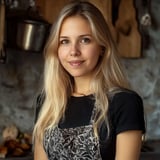 Pin
Pin
A comprehensive guide to precise ingredient measurements - the foundation of successful cooking and baking. Accurate measuring makes the difference between perfect results and kitchen disasters. After years of professional experience, these proven measurement techniques will help ensure your recipes turn out consistently excellent every time.
Standard Measurement Conversions
Keep these essential conversions accessible in your kitchen for quick reference.
Flour Measurements
- 1 cup all-purpose flour = 45g
- 1 cup cake flour = 40g
- 1 cup whole wheat flour = 50g
- Fluff flour before measuring
- Avoid compressing
- Sift for delicate baked goods
- Level with straight edge
Sugar Measurements
- 1 cup granulated sugar = 200g
- 1 cup brown sugar (packed) = 220g
- 1 cup confectioners sugar = 120g
- Pack brown sugar firmly
- Sift powdered sugar
- Level granulated sugar
Liquid Measurements
- 1 cup water = 237g
- 1 cup milk = 240g
- 1 cup heavy cream = 238g
- Use transparent measuring cups
- Read at eye level
- Place on level surface
- Measure precisely
Measuring Fats
- 1 cup butter = 227g (2 sticks)
- 1 cup oil = 224g
- 1 cup shortening = 190g
- Use room temperature butter
- Reference marked wrappers
- Soften but avoid melting
Precise measuring transformed old family recipes from approximations into consistently excellent results. The difference proper measurement makes is remarkable.
Required Kitchen Tools
- Digital kitchen scale
- Glass liquid measuring cups
- Nested dry measuring cups
- Measuring spoons
- Flour sifter
- Straight-edged spatula
Common Measuring Mistakes
- Compressing flour
- Using ingredients at incorrect temperatures
- Estimating measurements
- Using wrong measuring tools
- Skipping leveling step
- Ignoring humidity effects
Specialty Ingredient Measurements
- Chocolate Chips: 1 cup = 170g
- Nuts: 1 cup = 120-150g (type dependent)
- Coconut: 1 cup = 85g
- Cocoa Powder: 1 cup = 100g
Problem Solving Guide
- Dry results indicate excess flour
- Spread cookies suggest incorrect butter measurement
- Dense cakes point to liquid ratio issues
- Heavy bread texture comes from flour measurement
Advanced Measuring Benefits
- Reliable baking results
- Effortless recipe adaptation
- Efficient preparation
- Enhanced culinary expertise
Mastering measurement techniques establishes the foundation for culinary success. These fundamentals ensure consistent results across all recipes, from basic to advanced. Proper measuring transforms good cooking into excellent cooking.
Reference this guide regularly to build measurement expertise. Precise measuring leads to exceptional results and increased kitchen confidence.
Frequently Asked Questions About the Recipe
- → Why is using grams better than cups for measuring flour?
- Measuring with grams gives precise results, unlike cups, which can change based on how packed the flour is.
- → What’s the cup equivalent of 100g of flour?
- 100g of regular flour translates to roughly 3/4 cup and about 1 tablespoon.
- → Do I have to sift before weighing my flour?
- Nope, sifting doesn’t need to happen before weighing. Just add it directly to the scale’s bowl.
- → What if I don’t own a kitchen scale?
- If scales aren’t handy, use cups instead. Fluff your flour well, spoon it into the cup, and carefully level it with a straight edge.
- → Do I need to zero out the scale when using a bowl?
- Yep, always reset the scale with your bowl on it first. Then, add only your flour for an accurate reading.
